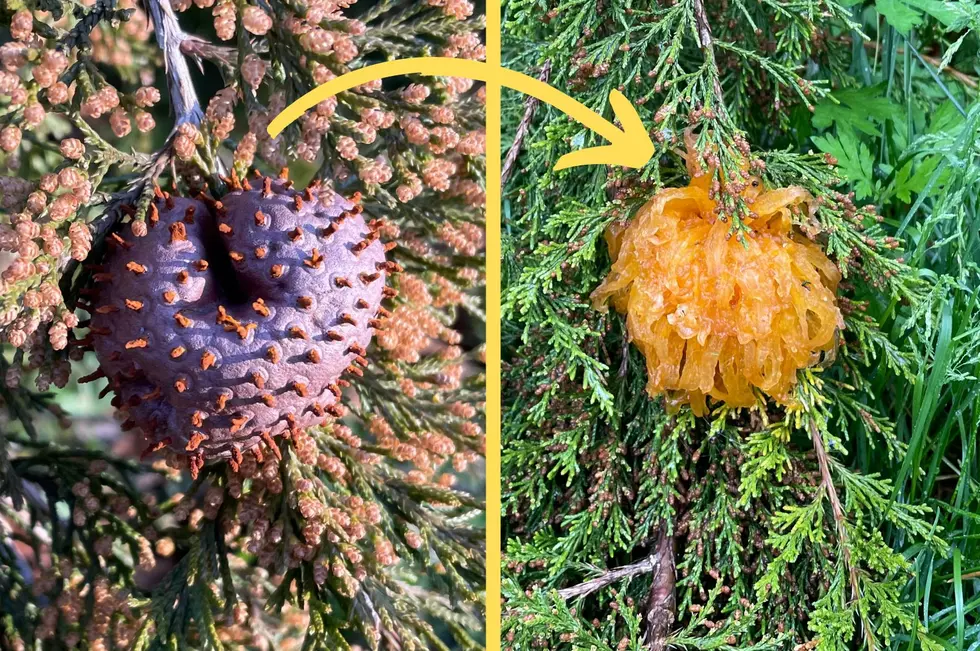
Warning: New York Apple Trees at Risk From ‘Exploding Hearts’
Recent weather in the Hudson Valley has been the perfect recipe for one of the most frustrating fungi in the state... and it could be threatening New York apple trees.
It's already been a tough 12 months for apple growers in the Empire State. From the "apple-apocalypse" of 2023 to recent frosts that led some orchards to rely on wind machines and hovering helicopters to save budding blossoms, it seems like work never ends to protect one of the state's most famous crops. Now, a new threat has emerged.
Cedar Apple Rust in New York State
Cedar Apple Rust (Gymnosporangium juniperi-virginianae) has made itself at home in the northeast United States. The fungus thrives when two specific trees are in close proximity to one another, specifically a species of juniper tree such as red cedar, and an apple tree. Together, they can wreak havoc on both hosts.
What Is Cedar Apple Rust?
The fungus begins as a gall on the juniper tree, like the red cedar above. After absorbing enough water from spring rains, the often heart-shaped galls begin to erupt small spikes called telial horns, which continue to grow until they "explode" into gelatinous tendrils (below). This is also a sign that spores have been released in the air and are on the search for a nearby apple tree.
How Cedar Apple Rust Affects New York Apple Trees
While galls form on the cedar trees, the "rust" part of Cedar Apple Rust's name begins when spores find apple tree leaves. By the month of June, affected trees can start to show "rust spots" on their leaves (below). In certain cases, the fungus can lower apple production and even kill the tree in serious instances.
Fighting Cedar Apple Rust in New York State
In some cases, juniper trees within a three mile radius of apple orchards are removed to avoid the possibility of a fungus infection. While the fungus can be harmful, many trees (both apple and cedar) often tolerate Cedar Apple Rust. Galls can also be pruned before telial horn begin to grow.
5 of New York's Most Devastating Invasive Species
Gallery Credit: Karolyi



